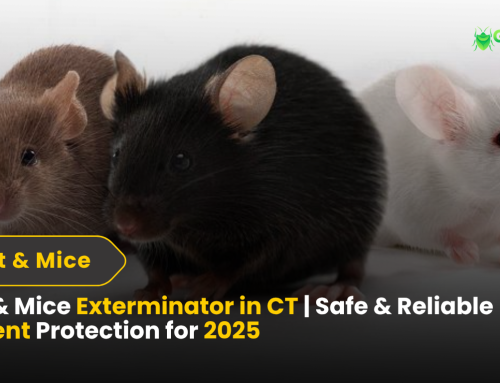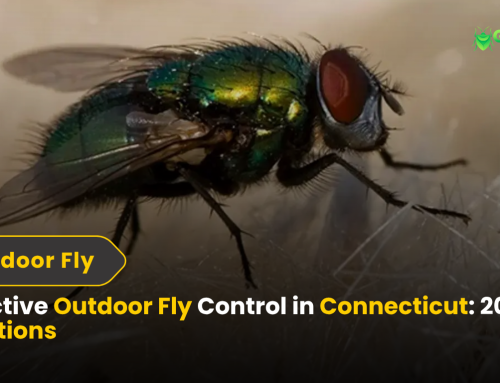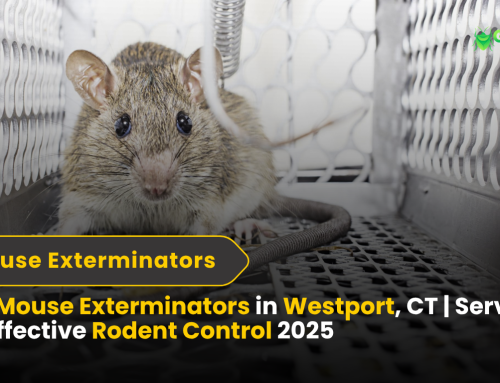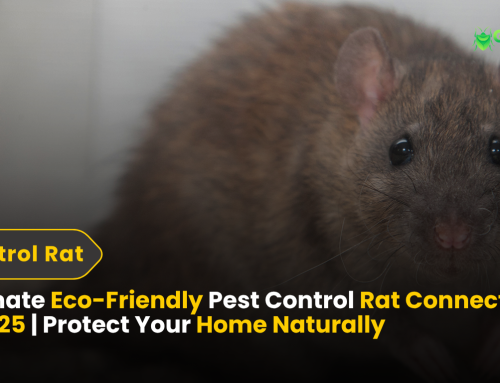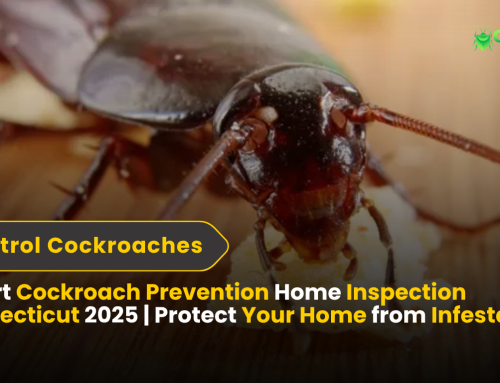Best Pest Prevention Strategies For Homes in Connecticut
Connecticut Pest Control for Homes The rich natural beauty, historic towns, and suburban charm of Connecticut are excellent reasons to live here. However, at the same time that Connecticut is an inviting environment to so many people, it also invites an array of pests from insects to rodents that not only damage your property but also spread diseases and disturb your peace of mind. Effective pest prevention mechanisms should be implemented to secure your home. The blog outlines why pest prevention in Connecticut homes is important, the challenges unique to the state, and some practical solutions that prevent pests from invading your space.
The Importance of Pest Prevention in Connecticut:
Pests are not just pesky-they pose actual serious risks to your property and health. Pest invasions cause expensive repair for the homeowner in Connecticut. Termite infestation and carpenter ants eat through wood, which deteriorates the structure of your house. Rodents, for example, mice and rats chew through wires and insulations, which can harm your home, but on top of that, they carry the risk of diseases such as Hantavirus and Salmonella. Cockroaches, however, are allergens and induce bronchospasm, thus exacerbating asthma and other respiratory disorders.
More than health and structural risks, pests interrupt the comfort of your living space. Imagine spiders in the basement, wasps around your deck, or ants in your kitchen. These intrusions reduce the enjoyment of your home and can cause stress and frustration. That is why pest prevention is not only about protecting your property but also about having your peace of mind.
Why Pest Challenges Are Unique to Connecticut?
Connecticut’s diverse geography, ranging from wooded areas to coastal regions, makes it a Connecticut’s geography is varied, with both woodlands and coastal areas. The variety creates a haven for numerous types of pests. Spring and summer bring their assortment of culprits. The warmth that Connecticut’s climate throws around so generously brings ants, termites, mosquitoes, and ticks out to party. When the temperatures drop into fall and winter, mice and rats move indoors into cellars, attics, and crawl spaces to hide.
Cockroaches, spiders, and pantry pests are perennial pests that can show up any day. Connecticut home ages and constructions can also attribute to pest infestation. Older homes have many holes and cracks through which pests enter the house. Other factors include a lush green land with abundant vegetation and closeness to the natural habitat areas, increasing chances of having raccoons, squirrels, and bats.
Effective Pest Prevention Strategies for Connecticut Homes:
Pests can be prevented in any Connecticut house by proactive practices and continuous maintenance. No strategy is foolproof, but these guidelines significantly limit the possibility of an infestation. The main approach to pest prevention requires denial of space in your home. Search your home for signs of entry by pests. Look in your foundation, gaps around windows and doors, and holes in siding or roofing materials. Seal these holes with caulk, weatherstripping, or steel wool to limit room for pests. Pay special attention to vents, pipes, and utility lines because rodents and insects commonly enter your house through these areas.
A clean home is not an attractive place for pests. Keep your kitchen, dining areas, and bathrooms clean to remove crumbs, spills, and other food sources. Store pantry items in airtight containers and dispose of garbage immediately. Don’t forget the less obvious spaces, such as under appliances or in storage rooms, where pests like to hide. Moisture attracts many pests, including termites, cockroaches, and mosquitoes. Provide good ventilation and fix leaks in the plumbing or roofing. Run a dehumidifier in damp areas such as basements. Install gutters and downspouts to direct water away from the foundation.
It often forms a line of defense between your home and the pests. Maintain shrubs and overhanging branches and other forms of vegetation as they serve as bridges between pests and your home. Get rid of standing water as this is a primary source of mosquito breeding sites, and ensure that firewood is placed 20 feet away from the house to prevent termites and rodents from entering your house. Prevention alone does not guarantee an absolutely pest-free home.
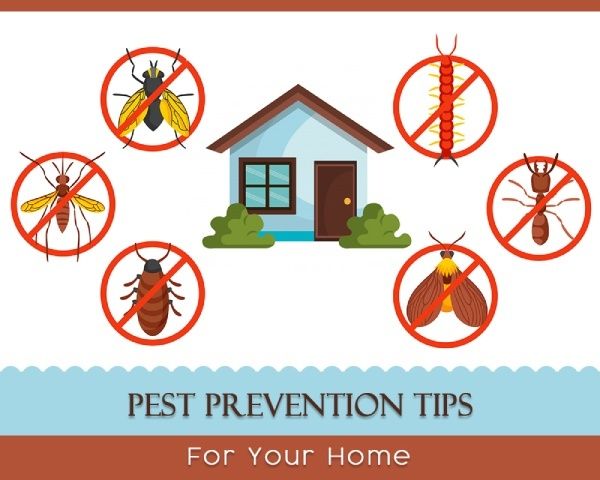
Why You Need To Choose Green Pest Management Service in Connecticut?
For any home pest prevention service in Connecticut, Green Pest Management is a reliable partner. As experts serving this locality, we understand the unique challenge and provide solutions for Connecticut’s needs. Our licensed professionals perform a detailed inspection at every visit to identify specific issues your property is experiencing. This approach helps us develop a plan that combines effective treatments with proactive prevention strategies. Whether you’re dealing with ants, rodents, termites, or other pests, our eco-friendly solutions ensure the safety of your family and pets while delivering long-term results.
At Green Pest Management, we are proud of ourselves in that we have been customer satisfaction-oriented. We are professional technicians who would even take the time to inform the client of pest prevention and be helpful in making sure their space remains pest-free at all times.
With our flexible service plans and very transparent manner, we allow homeowners to protect their property and have peace of mind.
1. Pest Prevention in Greenwich:
Because of the proximity of the places to Long Island Sound and the profuse vegetation, Greenwich is vulnerable to a wide range of pests, including rodents and insects. The lush landscapes and old homes around here present the ideal conditions for pest problems. The residents should take particular precautions because pests like termites, ants, and mosquitoes prefer humid climates.
In Greenwich, pest prevention begins with a thorough inspection of older homes, where gaps and crevices in the foundation and roofing materials are common entry points. Ensuring that these gaps are sealed is crucial in preventing pests from entering. The town’s humid climate also requires attention to moisture control. Homeowners should ensure proper ventilation in their homes, fix plumbing leaks promptly, and use dehumidifiers in damp areas to curb issues like termites and mold. Regular pest control services for early detection plus strategies to eliminate food and water sources help keep away pests.
2. Pest Prevention in Stamford:
Stamford, Connecticut, is the state’s third biggest city, but it presents one of the more difficult areas to control pest populations: high density, vast infrastructure, and commercial activity. Places that are most likely to get pests, for example restaurants and supermarkets, have so much foot traffic. It is, therefore, quite extensive in coverage of all the residential, commercial, and industrial environments, both inside and outside of the house.
Sealing all entry areas within commercial and residential buildings does play a very crucial role in minimizing Stamford pest issues. Ensuring the sealing of every crack and gap surrounding the windows, doors, utilities, will surely minimize pest access into these buildings. In the commercial area, most probably sealed food storage, waste handling, and proper sanitation ensure that there will be minimal pest problems. Some preventive measures that are always needed to be done at home include check-ups for the house, which includes commonly used pests such as ants and roach. Other problems such as standing waters and dense vegetation leading to pest breeding such as mosquitoes and ticks have to be attended to at the right times.
3. Pest Prevention in New Canaan:
New Canaan is known for its quiet wooded areas and luxury homes, but this also presents pest prevention challenges tied to its large, wooded properties and proximity to natural wildlife habitats. Specifically, deer ticks, mosquitoes, and rodents are common in areas with extensive landscaping and wooded environments. The spacious homes in New Canaan often have attics, basements, and crawl spaces, which can become hotbeds for pest activity if not properly maintained.
In terms of pest management, home owners in New Canaan have to maintain their out-of-doors. Overgrowth should be trimmed back along with cleaning up wood piles and other debris that draws pests into the area. Mosquitoes, among other insects, can breed from stagnant water, so eliminate standing water from gutters, bird baths, or other containers outdoors. Inside, sealing cracks and gaps in the foundation, windows, and doors is important to seal off insects and rodents. Proper regular pest inspections and maintenance and addressing any moisture issues will keep common pests from taking over.
5. Pest Prevention in Wilton:
Pest control in Wilton begins with exterior maintenance. Maintaining the vegetation cut and removing possible food sources, such as garden waste and compost piles, can help prevent pests. Ensure that your home is sealed tight, especially around vents and windows, to keep them out. Rodent-proofing is a must and includes closing holes and cracks that may let them into your home. The homes of Wilton are kept pest-free by conducting regular inspections and through the environmentally friendly methods of pest control.
For many, the tree-lined streets and expansive residential properties are an attractive feature, but these features can also bring with them a higher risk of pest infestations. The expansive outdoor spaces, gardens, woodpiles, and natural debris attract various pests, such as ants, termites, and rodents. As the seasons get colder, these pests often seek shelter in the homes, targeting attics, garages, and basements.
6.Pest Prevention in Darien:
Darien is a charming beach town but has some pest control issues with certain pest prevention challenges. As this is a very humid and coastal environment, it is conducive to different kinds of pests such as mosquitoes, termites, and rodents. Older homes in Darien and the coastal nature bring along pest control in ensuring an infection-free environment.
Pest control in Darien revolves around controlling moisture mainly as most pests thrive well in damp environments. The drainage must be proper, gutters clean, and cracks in foundations and seams of windows and doors sealed. In coastal areas, rodents like the Norway rat, being a common pest, sealing all necessary points around utility pipes and even attic vents is an important need. Also, elimination of standing water and cleanliness of outdoor spaces can minimize breeding sites for mosquitoes. Periodic inspections by pest control service professionals are needed to get ahead of a possible infestation and get proper treatment as soon as possible.
Conclusion:
Pest prevention is an essential part of home maintenance for Connecticut residents. By understanding the unique challenges of the state and implementing effective strategies, you can protect your home from the damage, health risks, and stress caused by pest infestations. Whether you’re addressing minor issues or seeking comprehensive solutions, Green Pest Management is here to help. Contact us today to learn more about our services and take the first step toward a pest-free home in Connecticut.


